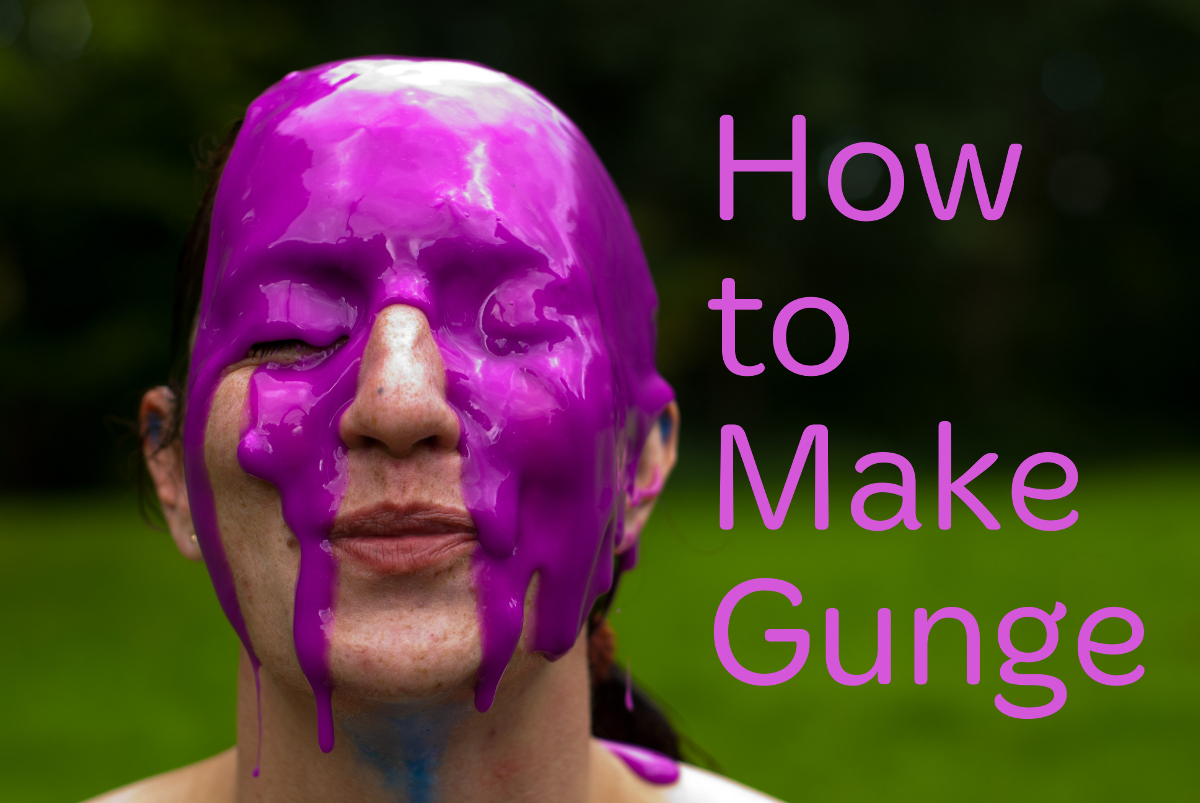
Gunge RecipeThis
page will give you a recipe for making gunge. If you are interested in
more details about other options, please see the other pages on the
site.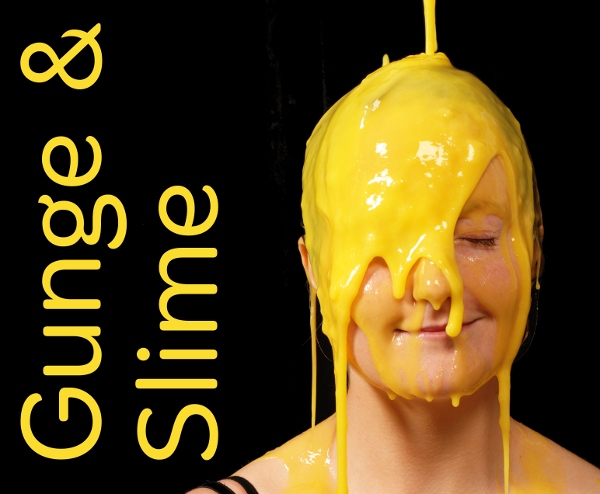 Gunge and Slime Technology
Gunge and Slime Technology There are many other recipes for making goo, both on
Instructables and other places on the web as well as commercial products, so why
use this one?
You enjoy making things and you will probably learn something
new whilst making this
The cost will be significantly cheaper than buying a
commercial product
You have full control of the properties of the goo- from
runny to thick, clear to opaque and colourless to vivid colours
You can happily make large quantities of goo- even filling a
paddling pool becomes practical (think how many tubs of toy shop slime you’d
need to this, or how much PVA glue)
The materials are easy to store- you can easily keep some on
hand for rainy day play, or next Halloween
The gunk is a bit sticky- it therefore has a much better
feel, and visual appeal than some commercial products (like Gellibaff), that
simply run off.
The materials are biodegradable, and hence easy to dispose
of
Most importantly- it’s more fun than buying
it!
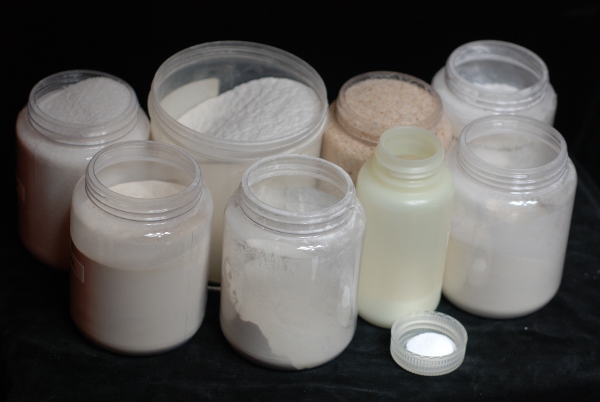 Possible Thickeners
Possible Thickeners
The
substances used to make gunge generally have long shelf lives (normally
several years) and so can be bought in larger quantities and stored if
desired. Moisture is their biggest enemy, so they will need to be
packaged in a well sealed container.
You will also need:
powder or poster paint
Suitable container to mix in- bucket for the quantity described
Scales
Wooden spoon, whisk, powered mixer or similar
Step 2 - Preparation
Measure
out the following quantities of materials. I use plastic cups or a jug
to do this, but a piece of folded paper will work as well. Quantities
do not have to be precise, but it may help you make a batch the same in
the future if you can be fairly accurate.
The water can go into the mixing container straight away.
Powder paint 160 grams (2%)
Thickener 96 grams (1.2%)
HOT water 8 litres
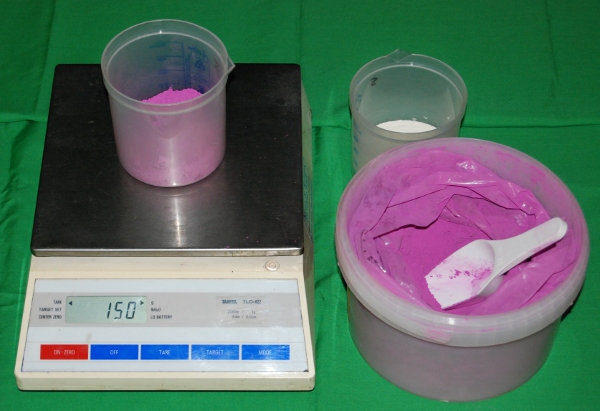
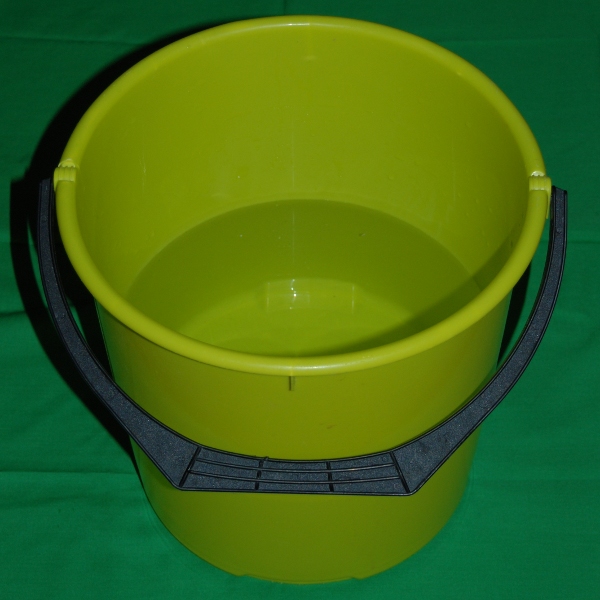 Weigh out Ingredients & Measure Water
Weigh out Ingredients & Measure Water
Step 3- Mixing
There
will be variation in the properties of the gunge, most importantly the
viscosity (thickness), dependent on the materials used. It is therefore
worth experimenting with small quantities first before you make a large
batch, until you have a goo you are happy with. The quantities given in
these instructions will work well with natrosol, and will therefore
serve as a good starting point.
You will want to mix up in an area where a spilt mess can be easily cleaned up, so probably not your living room!
Start
by mixing in the colouring into the water- 2% will give a good level of
colour and opacity for most uses, but dependent on what you want to use
your gunge for you may need to vary between approx 1% and 5%. Liquid
poster paint (tempera) can also be used, but I wouldn't recommend food
colouring as it stains easily.
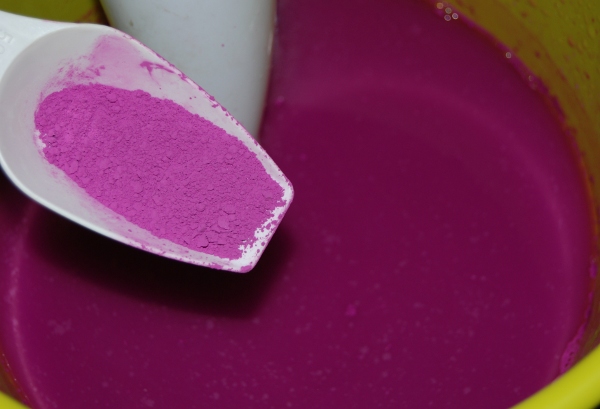 Mix in the Colourant
Mix in the Colourant
Water
must be hot for the mixing to work correctly. If natrosol is dispersed
into cold water, the thickener tends to drop out and form a jelly that
won't then mix correctly. I tend to use hot water straight out of the
hot tap.
Add
the powder into the water slowly whilst stirring thoroughly and keep
stirring until you notice the water starting to thicken up, and there are no lumps. This will
usually take a couple of minutes. If at all possible, use a powered food mixer to get a well mixed concoction.
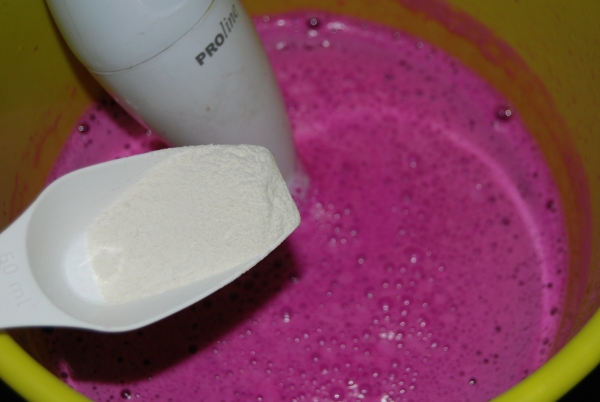
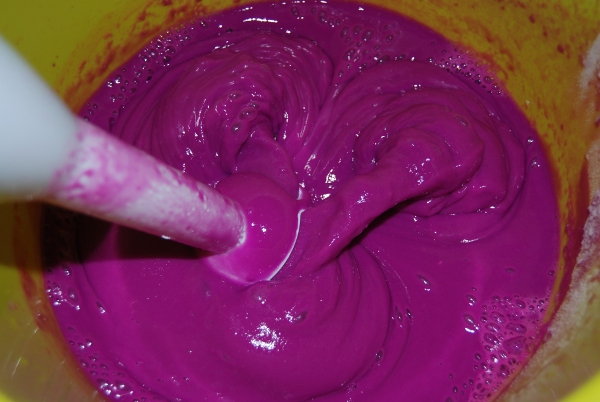 Add the thickener and mix thoroughly
Add the thickener and mix thoroughly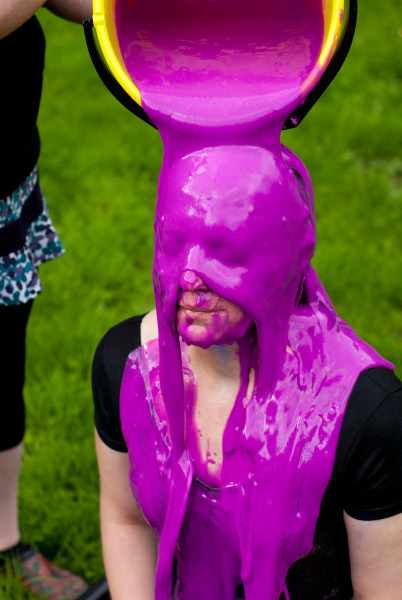
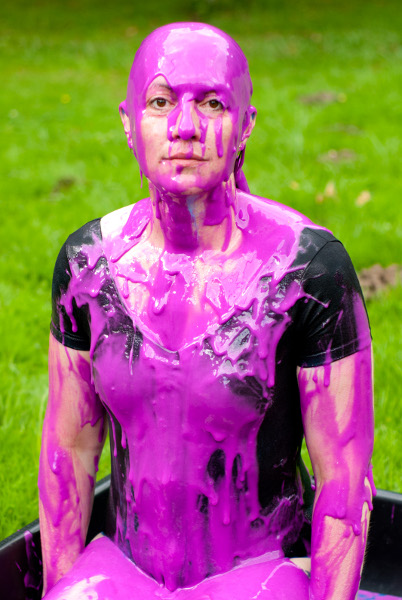
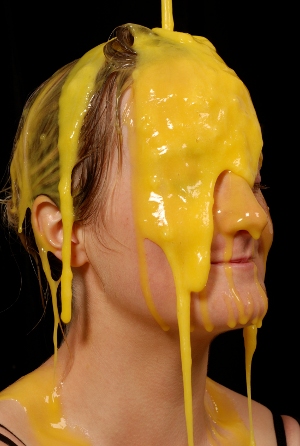 Pour it over your friends!
Pour it over your friends!SafetyWhilst
I have been careful to only recommend materials that are not known to
have any significant health risks associated with them, they cannot be
classed as completely hazard free.The
largest single issue is the slipperiness of the gunge- it can be very
easy to slip over on. It is therefore essential to consider this when
planning any activities involving gunge, including clean up and washing
off as the most significant effects will be found on a smooth surface
such as a bath!Most
of the materials are supplied as relatively fine powders, and as such
create nuisance dust. It is therefore worth wearing a dust mask when
handling large quantities. Likewise if this dust gets into eyes it can
cause irritation so goggles may be appropriate.Most of the materials are sold as safe for skin contact and
to date I have not had any problems with this. I would however be
slightly wary of allowing prolonged skin contact with the colourants as
it may stain!All
of these main materials are not hazardous when eaten, however many are
used as laxative additives, so it would probably be unwise to consume
large quantities !In
addition to the specific information above, general safe chemical
handling practice will further reduce the risk of any issues, in
particular;Store materials in sealed, well marked, containers in an area out of reach of children and petsWash hands before and after handling these materialsDispose of excess/ used materials/ empty packaging responsiblyWear dust mask when handling powdersClean up any spills quickly- Avoid using water to stop the area becoming slipperyDo not use utensils/ containers/ cleaning cloths that will be later used for foodSupervise children if they are making the gungeLarge Batches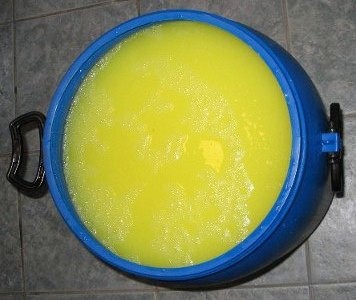 60
litre batch of Gunge made up for a Cub Scout fun day
60
litre batch of Gunge made up for a Cub Scout fun day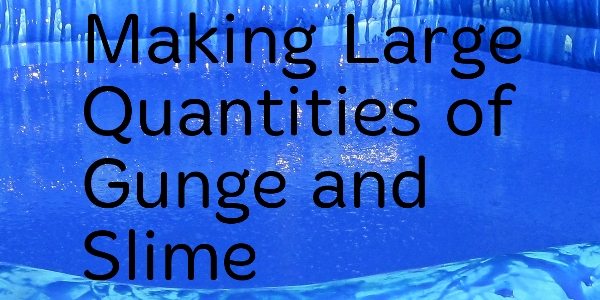 Bulk Gunge and Slime
Bulk Gunge and Slime 





